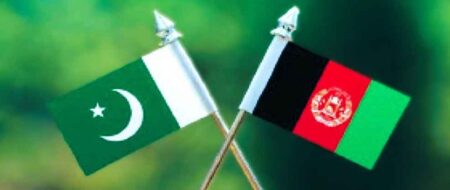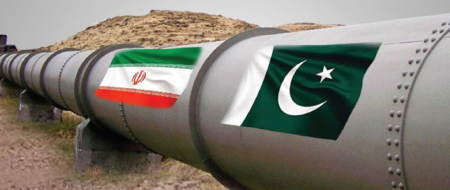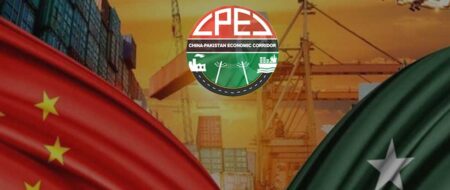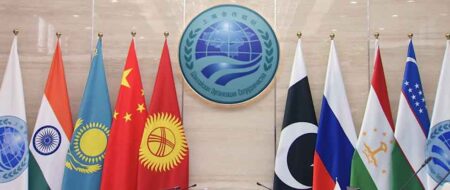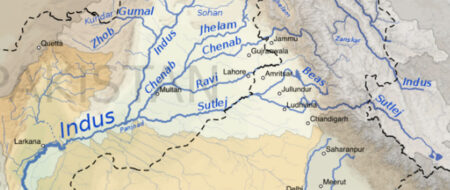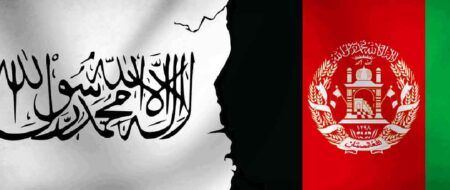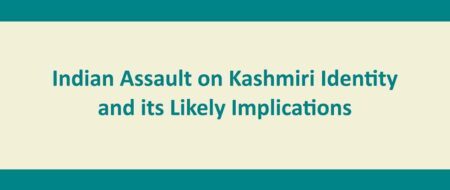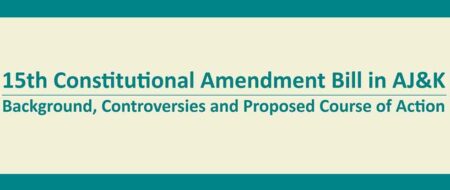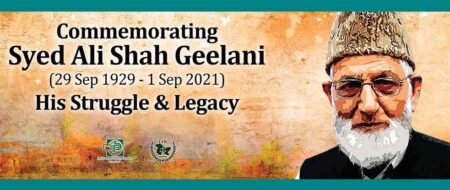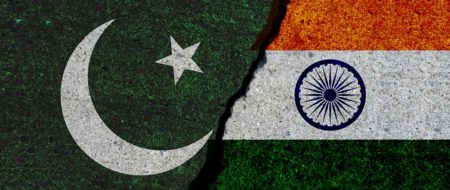Security Challenges in Afghanistan: Operation Enduring Freedom and the Role of Canada
Normal 0 false false false MicrosoftInternetExplorer4
Aisha Ahmad
Policy Perspectives, Vlm 4, No.1
Abstract
[The US-led War on Terror in Afghanistan has entered into its sixth year, yet, the security situation is extremely volatile. The North Atlantic Treaty Organization (NATO) has expanded its mission to the south of the country and its focus has changed from peacekeeping to warfare. Skirmishes with militants have resulted in the killing of dozens of NATO troops and resurgent militia as wells as civilians. The neo-Taliban are subscribing to new kinds of tactics, such as suicide bombing and use of improvised explosive devices (IEDs). The US and NATO war strategists are in a fix as to how to tackle the situation.
Being an important member of NATO, Canada has contributed “Special Forces” to the US-led “Operation Enduring Freedom (OEF).” These Canadian forces have been based in Kandahar province and are engaged in active warfare under the US command, indistinguishable from US troops. However, the numbers and activities of these OEF Special Forces are highly secretive and therefore their activities receive little media attention. Little is known about the details of Canada’s commitments to OEF, and the OEF mission is operationally distinct from the NATO mandate. As such, Canada’s OEF commitments are a very important subject of study. This paper is an attempt to study and analyze the security situation in Afghanistan, the role of Canada in the expanded International Security Assistance Force (ISAF) mission, challenges to its policy formulation and its impacts on security dynamics in the south of the Afghanistan, and the possible outcomes of OEF, and to suggest ways for resolving key issues. – Editors]
Canada in Afghanistan
Canada is a longstanding member of the NATO, a collective security alliance comprised of 26 countries. Being an overstretched middle power, sharing the world’s largest undefended border with the world’s sole superpower, necessitates that Canada allies itself strategically with its much more powerful southern neighbor. The Canadian-American friendship is a natural alliance based on geographic realities, but occasionally results in disputes over natural resources that frequently disadvantage the weaker of the two parties. Canada has thus learnt the delicate balancing-act of exerting its sovereignty when it can, while frequently complaining that it is “sleeping next to an elephant.”
In late 2001, Canada participated in the US-led War on Terror, as part of the military coalition that toppled the Taliban government in Afghanistan. After the fall of the Taliban and re-empowerment of the Northern Alliance militias, the international community sought a peace-building solution for Afghanistan in December 2001, at Bonn, Germany. United Nations Security Council Resolution 1386 and Annex I of the Agreement on Provisional Arrangements in Afghanistan Pending the Re-Establishment of Permanent Government Institutions mandated the creation of an International Security Assistance Force (ISAF) to help stabilize the capital city of Kabul and surrounding areas. The Bonn Agreement limited the role of ISAF to Kabul, but also suggested that these troops might be used in “other urban centres and other areas.” NATO members agreed to contribute forces to stabilize and pacify the capital city of Kabul, in order to create a strong central government in transition to democracy.
In the two years following Bonn, the Afghanistan mission was intensely scrutinized by human rights groups, journalists, and political scientists. Despite overwhelming military actions, Osama bin Laden, the key target of military operations, remained at large. The nation-building experiment was deteriorating; plagued by warlord domination and chronic insurgency, Afghanistan could not shake the label of “failed state.” The Taliban regrouped and gained control of significant territory in the south. Frustrated with the impotence of the new government, in 2003, the US decided that the only way to resolve their chronic failures and impotency was to expand the ISAF mission across the country.
UNSC Resolution 1510, passed in October 2003, opened the door for an expansion of the NATO mission. The resolution authorized the “expansion of the mandate of the International Security Assistance Force to allow it, as resources permit, to support the Afghan Transitional Authority and its successors in the maintenance of security in areas of Afghanistan outside of Kabul and its environs.” Though Canadian troops did not relocate south until February 2006, this decision fundamentally changed the nature of the ISAF mission. The resolution shifted the focus of the NATO mission from stabilization to military combat. The agenda behind this expanded mission was to eliminate the Taliban threat in Helmand and Kandahar provinces; the United Kingdom and Canada decided to head the operations in those provinces, respectively.
Canada agreed to take the lead in the active combat mission in Kandahar because of its trade relations and strategic partnership with the United States. American pressure was instrumental in the Canadian decision to go to war. Importantly, the Canadian national interest lies as much in thriving on the North American continent as it does in surviving the rugged deserts of southern Afghanistan.
In 2003, Canadian anti-war protesters took to the streets against the Iraq war. Under intense pressure from the Americans to send troops to the Gulf, the Liberal government in Ottawa was faced with the choice of either breeding domestic discontent or aggravating their biggest ally. The Canadian government responded to this no-win situation by openly refusing to support the US war in Iraq, but quietly promising their American friends that Canada would expand its commitments in Afghanistan. Thus the government scored points with the public by presenting itself as a conscientious opponent of war in Iraq, while maintaining positive diplomatic relations with its chief trading partner by promising to take the lead in Kandahar. The decision was an act of shrewd, tightrope politicking.
The Canadian public were originally unopposed to the expanded mission in Kandahar because it was portrayed in the media as a continuation of the peacekeeping work done in Kabul. There was very little news coverage of the Canadian contribution of Operation Enduring Freedom, as those Special Forces were directly under the command of the US. Moreover, when the decision to move ISAF troops from Kabul to Kandahar was announced in 2005, the vast majority of Canadians had no idea of the difference between the two theatres. Therefore expanding the mandate of the ISAF mission did not attract much public attention, until Canadian soldiers started coming back home in body bags. It took several months for the public to realize what the Canadian troops were doing in Kandahar was not purely “stabilization” or “peacekeeping.”
Tragically, Canadian policy-makers failed to consider the fundamental futility of the active combat mission, underestimating the profound socio-cultural dynamics and guerrilla war culture of the Pashtun-dominated south of Afghanistan. These miscalculations have resulted in the repetition by Canada of the same culturally insensitive and excessively violent behaviors that have characterized every failed military occupation of Afghanistan in its long history of war.
Kandahar in Context
Identifying the Sources of Violence
Despite the overly simplistic reporting of Taliban insurgency, the violence in southern Afghanistan is highly complex. Much insurgency is inaccurately labeled as “Taliban insurgency,” which does not capture the multidimensional reality of conflict in the Pashtun south and the sheer number of actors involved in the conflict.
Core Taliban fighters are those that were part of the former Taliban governments, are devout ideological adherents, and part of organized resistance loyal to the leadership of Mullah Omar. Taliban hardliners enjoy more success in the south and east of Afghanistan than anywhere else in Afghanistan due to both ethnic and ideological considerations. These key Taliban fighters seek the destruction of the central government, which they deem a foreign puppet regime, and the complete expulsion of foreign fighters from the country. This group seeks to recapture control of the government and reinstall their authority over the countryside. Though the Taliban leadership has promised to be less extreme and harsh in their implementation of Shari’ah law, many Afghans remember the social repression under the Taliban leadership. Because of these negative experiences, the enthusiasm for Islamic governance solutions to protracted civil war, though still potent in the Pashtun belt, is not nearly as passionate as it was during the mid-1990s.
Since the NATO occupation, a strand of neo-Taliban violence has emerged, influenced by non-Pashtun jihad concepts, particularly al Qa’eda ideologies. Unlike the original Taliban movement, which sought to end the violence of rapacious Northern Alliance militias against civilians, these neo-Taliban now seek to maximize low-level insurgent violence that results in retaliation against civilian populations. The use of Improvised Explosive Devices (IEDs) and suicide attacks by Taliban hardliners are also indiscriminate towards civilians, and are used especially in urban centers with heavy foreigner presence.
Despite these neo-Taliban actions in the urban centers, the receptivity to Taliban solutions to rural insecurity remains high enough to attract a significant support from Pashtun tribal peoples. Taliban-sympathizing tribal people are neither politically ambitious nor ideologically imperialistic. The tribal Pashtuns of the south are profoundly xenophobic, and have a violent, visceral reaction to armed foreigners on their land. They are illiterate, have no international aspirations, and live according to a very explicit code of conduct and honor known as Pashtunwali. Their alliance with Taliban is therefore based on a natural, cultural and religious affinity, and a phenomenon of unification that occurs in Afghanistan against a foreign foe. Despite tribal rivalries, deep ethnic conflicts, and other feuds, Afghans have a potent nationalistic rallying against external threats, which will manifest as violence against foreign troops. These anti-occupation tribal people are often inaccurately deemed insurgents, due to their sympathy for the Taliban movement or adherence to highly conservative and traditional Islamic norms. Given that all Pashtun men in the southern region are already heavily armed and prepared to defend their land from foreign incursions, identifying the casualties of war as “militants” becomes an exercise in NATO self-absolution.
On the other hand, inter-tribal and inter-factional warfare continues in the resource-scarce south. The true natures of these feuds, which are sometimes personal rivalries or historical grievances, are exceedingly difficult to discern, and this violence is also often incorrectly reported as insurgency. Personal feuds between warlords also inform conflict dynamics; for example, General Abdul Malik severed his alliance with General Abdul-Rashid Dostum after the death of his brother in 1996 for which he blamed Dostum. It resulted in a protracted, bloody rivalry between their personal militias in Balkh and Faryab provinces, as Malik sought to settle this old score with his personal enemy. These types of conflicts are not uncommon across the spectrum of Afghan jihad. Given the degree of desertion and switching sides exhibited by Afghan militiamen, determining the loyalties of the Afghan jihad commanders becomes bewildering research exercise.
Importantly, non-Taliban anti-government groups, such as Gulbuddin Hekmatyar’s Hizb-e-Islami faction, add to the complex conflict dynamics in eastern Afghanistan. Though never a Taliban ally and without influence in Kandahar province, Hekmatyar recently offered to forge an alliance with al Qa’eda and any other anti-government forces. There are no reports of Taliban leadership agreeing to any such alliance.
To add to this multidimensional mixture of Taliban hardliners, tribal Pashtun fighters, non-Taliban insurgent groups, and warring inter-tribal and militia factions, the security crisis in southern Afghanistan is further complicated by the presence of criminal gangs, drug lords, and opportunistic local strongmen. These surreptitious societal elements are driven by profit-maximization and engage in violence to protect their personal and economic interests. The conflict dynamics in southern Afghanistan are therefore highly complex, and cannot be tackled through an “anti-insurgency” mission.
Reasons for Taliban’s Success
The Taliban have emerged as successful in rural, southern Afghanistan for three key reasons. First, rural Pashtun people had a much less negative experience with Taliban forces than their urban neighbors did. During their 1996–2001 reign over Afghanistan, the Taliban concentrated their forces in major urban centers and left the villages to self-govern, as long as they abided by Taliban edicts. Importantly, Taliban edicts were also not radically dissimilar from the Islamic and Pashtun values already upheld in traditional village life of southern Afghanistan. For example, villages are physically designed to accommodate women within the purdah, allowing them a greater degree of personal freedom than women living in cities during the Taliban era. These different physical realities in rural areas resulted in a less intense, albeit highly imperfect, Taliban experience for rural women. The reaction to Taliban domination remains highest in urban centers, where the well-being of widows and working women was especially neglected.
Second, in addition to their ethnic and ideological affinity with Taliban, rural Pashtuns rally around the Taliban because of their anti-imperialist sentiments. This antagonism is partly explained by traditional rural xenophobia. But more importantly, NATO forces have displayed mannerisms and behaviors that mirror the experience of Soviet invasion, such as house searches, arbitrary arrests, and reckless civilian casualties. Moreover, the news of British Army entering Helmand has resonated strongly among the inhabitants; the word for foreigners, Farangis, is synonymous for British in colloquial speech. The phenomenon of anti-foreigner unification is the single greatest threat to the nation-building experiment in Afghanistan; if the Taliban resistance becomes a Pashtun peoples’ movement, the country could again collapse into civil war.
Third, the Pashtun tribal areas are physically impossible to control. While regional analysts have alleged that Pakistan continues to support the Taliban resistance through the Inter-Service Intelligence (ISI), this analysis does not alone explain the apparently grassroots resistance that has emerged in the Panjwai district of Kandahar against Canadian troops. While Pakistan clearly considers its national interest in their relations with their Afghan neighbors, alleged Pakistani interference cannot alone explain this socio-cultural phenomenon of resistance against foreign troops. Furthermore, Pakistan’s federally administered tribal areas (FATA) that act as a buffer between Pakistan and Afghanistan are by nature disrupting and uncontrollable. While the FATA has always provided a haven for mujahideen groups to regroup and organize themselves, this activity is largely outside of the control of any government, including Pakistan.
This fact augurs that the involvement of Pakistani in Afghanistan entails a multitude of conflicting interests, both national and regional. Nonetheless, despite these dynamics, the Pakistan angle alone cannot elucidate the structure and character of the anti-NATO resistance in the south of Afghanistan, which has evolved into a decidedly Pashtun, tribal, and locally supported phenomenon.
Expanding ISAF
UN Resolution 1510 was a response to allegations that the central government of Afghanistan was impotent and ineffective. Critics of the government’s progress gave President Hamid Karzai the embarrassing title of “Mayor of Kabul.” Despite efforts at a countrywide Disarmament, Demobilisation and Reintegration (DDR) program, the countryside continued to be run by powerful warlords with private militias. Increased opium production and reports of egregious human rights abuses at the hands of local commanders suggested that the nation-building experiment was failing. Low voter turnout in the 2005 parliamentary elections reinforced concerns that both the central government and democratization process lacked legitimacy outside Kabul. The security vacuum in the countryside became the focus of scrutiny of the new government, and human rights monitoring groups and political analysts called upon the international community to respond.
On another level, American and NATO allies were especially concerned about the rural southern Afghanistan, which continued to be a stronghold for popular Taliban support. After presuming an easy victory over the Taliban in the first year of the War on Terror, the reality of Afghan guerrilla tactics have dawned on coalition forces. American strategists realized that the Taliban will retreat and feign defeat, secretly waiting for NATO forces to withdraw prematurely so that they can recapture the government. This “wait-them-out” strategy was especially alarming to coalition forces that are fundamentally unwilling to stay in Afghanistan on such a long-term timeline. The old Pashtu proverb “If you take revenge in 100 years, you’ve acted in haste” became a sickening reality of controlling the Afghan countryside. Even if coalition forces can out-gun the Taliban in the battlefield using overwhelming military force, they cannot outwait them or out-match them in ideological commitment.
The weakness of the Karzai administration and the Taliban “waiting game” were the impetus for the expanded NATO mission. The expanded mission sent NATO troops out of Kabul and into the unruly countryside. NATO member states assumed varying degrees of responsibility; some members chose not to send troops into the countryside at all, while others such as Germany agreed only to act in a stabilization capacity in the more stable Northern provinces, where the Taliban threat is negligible. America’s staunchest allies, Canada and the United Kingdom, agreed to take responsibility for the unstable and anti-government south. Expanding the ISAF mission to root out Taliban in their sedentary places of retreat was a grave miscalculation by policy-makers.
The ISAF mission in southern Afghanistan was expected to both provide security in the vacuum their action would create and eliminate the Taliban insurgency, and has therefore resulted in a simultaneous stabilization and destabilization effect. In urban areas, ISAF troops act in a stabilization and peacekeeping capacity, while ISAF Provincial Reconstructions Teams (PRTs) provide development and humanitarian assistance in an effort to win the “hearts and minds” of village people. At the same time, NATO forces pursued intelligence leads on Taliban whereabouts, bringing aggressive military action into xenophobic rural areas. These aggressive actions have resulted in extreme destruction of property and life. As such, the net effect of these contradictory joint military-stabilization-reconstruction initiatives have antagonized Pashtun tribes, militarized humanitarian aid, and increased anti-government and anti-NATO insurgency.
Why Canada is Sleeping with the Elephant
Despite the insistence of the federal government otherwise, Canada has no direct national interest in leading the active combat mission in Kandahar. Nonetheless, Canada’s highly dependent strategic and trade relations with the United States have had a significant impact on its military alliances. Canada is a member of both NATO and the North American Aerospace Defence Command (NORAD), which were developed to protect the continent from the threat of Communist aggression during the Cold War. But since the defeat of the Soviet empire at the hands of the Afghan mujahideen, these former Cold War defense organizations lost much of their meaning. NATO redefined itself in the post-Cold War as an ad hoc defense alliance, defending Kosovars from genocide at the hands of Serbians. The NATO mission in Afghanistan is Canada’s first war-fighting operation since the 1950–53 Korean War.
During the Cold War and in the decade following the collapse of the Soviet Union, Canada built its international reputation as a “peacekeeping” nation. A middle-power country with a small but well-trained army, Canada was favorably positioned to establish itself as a nation committed to peacekeeping. Since the 1956 Suez Canal crisis, Canada has participated in over 50 peacekeeping missions worldwide, acting as a buffer between warring parties, in protracted conflicts such as Kashmir, Sierra Leone, Kosovo, and Congo. Canadians suffered limited casualties in their participation in UN missions, and only rarely had the authorization to use force to impose order. Over the course of the past fifty years, UN peacekeeping has become part of the Canadian national identity and reflects the cultural values of its diverse citizenry.
In 2003, anti-Iraq war sentiment was very intense in Canada. The war rhetoric of the American government did not resonate with the Canadian public, and weekly protests were staged across the country to let the government know that Canadians would not acquiesce to involvement in Iraq. Given the immense unpopularity of the American position, sending Canadian troops to Iraq would have been political suicide for the elected Liberal government. Iraq was not an option. Under immense pressure from both ends, the American government versus the Canadian public, the then Minister of Foreign Affairs Bill Graham promised that Canadian troops would not go to Iraq without an expressed UN Security Council resolution authorizing use of force. The Canadians tried to get such a resolution passed, but failed. They openly refused to comply with the American decision to go to war, winning the favor of the Canadian public. But behind the scenes, the Canadian government quietly promised to make it up to their powerful American trading partners by taking the lead in Afghanistan.
The expanded ISAF mission in Kandahar did not at first alarm the Canadian public. NATO troops had already been in Kabul for several years, without any major incident against them. Although a number of Canadian soldiers had already been fighting in Kandahar since the start of the War on Terror, their commitment to OEF was part of the US coalition and was therefore not a mission under the Canadian flag. According to most Canadian citizens, troops in Kabul were providing a peacekeeping role and helping Afghans build democratic institutions and foster economic development. Most importantly, the majority of Canadians had no knowledge of the geographic realities of Afghanistan and the immense difference in cultural and political dynamics between Kabul and Kandahar. To the average Canadian, moving southbound to a different Afghan city was therefore not a major shift in policy. Only in recent months have Canadians begun to understand that the active combat mandate is significantly different than their traditional peacekeeping role, and this realization has been traumatic to the Canadian national identity. While the newly elected Conservative government has tried to stifle discussion in the parliament on the reasons Canadian troops are being employed in aggressive warfare, a countrywide public debate has emerged on what the Kandahar mission could accomplish.
Canadian objectives in Kandahar are therefore indeterminate. Some policy-makers have questioned whether fighting the Taliban is a futile, senseless battle, while others have argued that fighting them is integral to protecting international security. The debate rages over what can be done, what should be done, and what is appropriate role for Canada. Unanimously, Canadian policy-makers wish to support the development of a stable democratic government and economic reconstruction in Afghanistan; the disagreement comes in how such an outcome can be achieved. Increasingly, policy-makers are coming to the realization that the aggressive warfare mission in pro-Taliban villages is causing political and economic destabilization, and is therefore fundamentally contradictory to the nation-building objectives. As such, though the Canadian government wants to see a self-sustaining peace emerge in Afghanistan so that foreign troops can withdraw, policy-makers are at a loss as to how to accomplish this aim.
Importantly, in November 2006, NATO forces in Helmand province negotiated terms of ceasefire with residents of Musa Qala district, bringing an end to futile and bloody skirmishes with Taliban fighters. Using traditional conflict resolution mechanisms, British forces agreed to withdraw their forces and allow villagers to self-govern, as long as they agreed to accept the central government and allow for basic development and education in their district. Though a highly controversial decision among NATO partners, this negotiated settlement managed to put an end to the Taliban uprising and provide security conditions for humanitarian assistance.
Impacts of Canadian Conduct in Kandahar
Estimates indicate that the active combat mandate has resulted in over 3,000 casualties this year alone. Though media reports and NATO press releases allege that the majority of these deaths were “militants,” there is currently no way of confirming numbers of civilians killed through the mission. Moreover, defining militancy in southern Afghanistan can be a deeply misleading exercise. All Afghan males by the age of maturity are armed and can be expected to defend their families, homes, and villages from external assault. The question then arises as to whether the Canadian definition of militant therefore includes all armed Pashtun men that resist external intrusion.
Reports from Panjwai district in Kandahar indicate that civilian casualties are being falsely reported as Taliban fighters. NATO bombardments have destroyed homes, orchards, and crops, leaving residents resentful and antagonized. Pamela Constable reported from the field that villagers have suffered significant losses as a result of Canadian miscalculations:
“I lost three of my sons, my brother, my wife, two daughters-in-law and many grandchildren,” said Abdullah Shah, a white-haired farmer, wiping his eyes with a dirty shawl. “I moved the whole family into a tent for safety when the fighting started. The international forces said there were 20 Taliban in that tent, but it was not true. How could there be when we were so crowded already?”
Canadian forces have threatened the lives and livelihoods of villagers, yet continue to embark on an effort to win the “hearts and minds” of the local populations. This strategy involves offering emergency and development assistance to communities through PRTs, which act as the humanitarian assistance and development projects wing of ISAF. Canadian commander Major Steve Murray in Kandahar argued that “The key is to move fast once the fighting stops, work with local institutions, get development projects going and get local people involved in their own security.”
The idea that Canadian forces can compensate for widespread destruction by offering development assistance to the affected villages illustrates a fundamental failure in the NATO policy. Clearly, NATO member states are ill-informed about the nuances of Pashtun guerrilla war culture and the values of Pashtunwali. The civilian deaths resulting from NATO incursions into the villages cannot be bought off with development assistance, nor can friendly relations be developed with the tribal people under these conditions of violence. These actions have, and will continue to, alienate the local population and undermine the legitimacy of the central government. The principle of badal, revenge, in Pashtunwali is especially important to understanding interactions with the Pashtun tribes. Canadians can expect tribes to accept their development assistance, while covertly joining the anti-NATO resistance.
Rural Pashtun men without any pre-existing grievances with the central government and NATO forces may join forces with the Taliban insurgency or other anti-government groups if the sanctity of their culture, religion, traditions, land, and families are undermined in any way. The tribal people, though not necessarily Taliban hardliners, respond to external interference vehemently and can therefore be radicalized. Imprudent mistakes by NATO forces that kill innocent civilians will cause this widespread radicalization, subsequently endangering Canadian troops and destabilizing the entire region.
In May 2005 in Kandahar, a room full of former pro-government Afghan Militia Forces (AMF) soldiers, rural Pashtun militiamen-turned-farmers, voiced these very grievances. Though once allied with coalition forces against the Taliban, their homes had since been subjected to searches by foreign forces and their poppy crops had been threatened or destroyed. These two dozen men announced their willingness to take up arms against foreign forces and the central government, in defense of the women of their purdah and the livelihoods of their families. This degree of reactionary hostility was expressed before Canadian troops even embarked on the expanded ISAF mission, before residents experienced civilian casualties and incursions at the hands of NATO troops. Village women interviewed at a mother-child center in Dand district in 2005 reiterated a similar anti-foreigner sentiment; even though these women acknowledged that foreign forces provided a degree of stability in the prevention of full-scale civil war, they also unanimously wanted NATO troops to leave as soon as possible. In all interviewed rural areas in the south, villagers clearly expressed their deep distrust of NATO motives and even more their hostility to seeing any foreign fighters occupying their lands, regardless of their motivations.
Importantly, NATO forces rely on the help of the Afghan Security Forces (ASF) and Qandahar Security Forces (QSF), to facilitate the rough battles against the Taliban. These forces are neither Afghan National Army (ANA) nor Afghan National Police (ANP), but fall under the government umbrella of the “Afghan National Security Forces.” The ASF and QSF act as private armies, and the US and coalition troops have come to rely on their local knowledge and battle skills in Operation Enduring Freedom. NATO has also reportedly relied on these forces in operations against Taliban fighters.
Unlike the nationally-recruited, ethnically diverse ANA, both the ANP and the ASF are locally recruited, and have ties to the other militia factions. The ANP has been wrought with allegations of corruption and criticisms that this local recruitment strategy has empowered and given legitimacy to local militias with histories of extreme violence. On the other hand, NATO and OEF forces have applauded the same local recruitment strategy for ASF soldiers, arguing that their native militia experience gives them a better understanding of the terrain during battle.
The ASF are the best paid, best trained, and best equipped fighters in the national security structure; they are paid by and under the command of American forces, acting as a private army for the coalition. NATO forces also reportedly rely on these local fighters to act as their native eyes and ears in the battlefield. Importantly, despite the battle utility of these proxy militias in the rugged deserts and mountains, the use of ASF discredits the central government and international troop presence as villagers suffer human rights abuses at the hands of foreign-backed local strongmen. Given the bloody histories of these proxy militias, arming these militias and empowering them in their communities is a negation of both democratization and nation-building objectives.
Opportunities for Change in Canada’s Foreign Policy
The nature of the Canadian mission in Afghanistan remains a contentious issue in policy circles and public debates across the country. The war effort in Kandahar remains unpopular; a September 2006 EKOS Research/Toronto Star poll showed over half of all Canadians want troops stationed in Afghanistan to be withdrawn entirely. Canadians lack confidence in whether the strategy is appropriate for meeting objectives, and the high civilian and soldier death toll resulting from incursions into villages undermines Canadians’ self-perception as pacifists. Nonetheless, at the November 2006 Riga Conference in Latvia, NATO allies reiterated their commitment to the expanded ISAF military mission, with Canada receiving nominal additional troop support from other member states and greater flexibility in the use of those NATO troops in battle operations. Despite domestic contention and disapproval, the military solution remains high on Canadian policy-makers’ agenda. American influence can partly explain why Canada remains committed militarily to a mission that seems futile and detrimental to the national interest. However, it is equally important to consider that Canadian policy-makers are unaware of alternative strategies for dealing with the Taliban.
Importantly, Canada has skills in peace-building and diplomacy that could be used to develop these alternative strategies for resolving the crisis. For example, as seen in the case of Musa Qala, Canadians should consider the option of holding local jirgas with communities affected by ISAF violence, which are suspected of harboring foreign fighters. A jirga is a consensus-based council of elders used to resolve disputes, which has an enormous amount of authority to impose decisions on villages and tribes. The council has the power to create local armies for policing and monitoring duties and the directives of the jirga are considered absolute. Both parties to the dispute are expected to be present at the council meetings. Given the unparalleled capacity of the jirga to control violence and exert influence, the most sensible policy decision on the part of all NATO members, especially Canada, is to engage the village people through this traditional method of conflict resolution.
However, Canadian policy-makers and diplomats are currently unacquainted with traditional Afghan methods of conflict resolution. Few policy-makers understand the rudiments of conflict management and dispute resolution in the Pashtun tribal belt. Without a basic understanding of the mechanisms, cultural norms, codes of conduct, and rules of engagement, Canadians currently remain impotent in engaging in effective diplomacy with the war-affected communities.
Learning these basic socio-cultural skills will allow Canadian diplomats the freedom to build relationships with tribal people and meet their security objectives. Even though the jirga is a challenging type of political engagement, this tribal council method of dispute resolution can be used to effectively communicate NATO’s security concerns to the villages. Rather than antagonizing the local communities through military action and then compensating with follow-up development assistance, NATO needs to voice its needs, concerns, and expectations to village leaders, so that elders can discuss options to satisfy both parties to the dispute. Possible solutions could include NATO troops’ withdrawal from xenophobic villages in exchange for guarantees that foreign fighters will not establish bases in their communities, a promise which can be enforced by local tribal armies. A plethora of other solutions can be devised through such negotiations. Canada, with its diverse and multicultural society and tradition of peacekeeping, has a unique ability to develop these needed diplomatic skills. Furthermore, pursuing this culturally nuanced diplomatic solution would recapture the Canadian identity as a balanced, peace-oriented nation, maintaining an independent foreign policy from their American neighbors.
Canadians can also take the lead in genuine, non-militarized humanitarian assistance. Currently, insecurity in the south has made it impossible for the majority of non-governmental organizations to operate in Kandahar province. As such, emergency assistance and development help has been administered by PRTs as part of the ISAF mission. This militarization of aid further endangers NGO workers, as humanitarian assistance becomes associated with violent military incursions into the villages. Through jirga meetings, the intentions behind humanitarian and development aid can be clarified, and if agreed upon by all parties, internationally-sponsored projects may be allowed to operate in rural areas to meet emergency needs. Receiving consent and support of local leaders would grant foreign development projects to local security protections, thereby making foreign troops presence unnecessary. Furthermore, Canadian troops that have significantly damaged crops and property should be prepared to pay compensation for the destruction of innocent human lives and livelihoods. Without acknowledgement of past failures, errors, and injuries, negotiations with local leaders will be tainted by unsettled scores and the call of retribution.
Importantly, in the event that Canada chooses to refocus its mission from defense to diplomacy, and take a lead role in humanitarian assistance, all development projects must be administered in a culturally appropriate manner, with the consent of local leaders. Though all Afghans desire a better future for their children, it is equally important to note that this is not the first time villagers have seen schools built by foreigners with a military agenda. The Soviets also developed schools for girls and boys during their military occupation, which were often designed to indoctrinate children with Marxist ideology and bolster support for Communism in the next generation. Therefore, if Canadian or other NATO countries are interested in enhancing education in southern Afghanistan, they must consider these historical realities and develop understandings with local communities about what educational programs would entail, how such programs would be administered, and how these programs can respect and reflect the needs and values of the village people in a curriculum for children.
Pakistan as a Peacemaker
Pakistan has been under the lens of scrutiny from every angle in the War on Terror. To its Western allies, Pakistan has not done enough to curb Taliban influence in the NWFP and tribal areas, and is accused of tacitly and secretly supporting the Taliban resistance through the ISI. Regional analysts have expressed concern that suicide attacks are fuelled by the Pakistani madrassa system, and that the government is complicit in the active destabilization of Afghanistan. On the other hand, to the Pashtun people of the frontier region, their government has recklessly killed hundreds of innocent civilians on the order of its American commander. The 2006 aerial bombardment of North Waziristan and strikes in Bajaur has pitted many in the NWFP and FATA against the central government and local scholars voiced concerns that such policies risk pulling Pakistan into a civil conflict. As such, Pakistan has been accused by Western states of doing too little, and by local populations of going too far.
But Pakistan is in a uniquely opportune position to change its domestic and foreign policies, in such a way that would genuinely resolve the crisis in the NWFP, FATA, and Southern Afghanistan. Unlike any other nation in the world, Pakistan has the capacity to engage Pashtun tribes, pro-Taliban or not, in effective, culturally nuanced diplomatic relations. In September 2006, Pakistan successfully ended the futile and bloody conflict with tribal people in North Waziristan, through the traditional jirga method of conflict mediation. No other state has this diplomatic know-how or cultural legitimacy. Given their expertise in dealing with the Pashtun tribal people, Pakistan can help NATO members understand how to engage in effective negotiations and build genuine relations with the people of southern Afghanistan. Currently, Canadian diplomats and policy analysts stationed in Islamabad have little understanding of the frontier region and the people therein. In Afghanistan, Canadians are struggling to catch up and learn the nuances of diplomatic engagement, and would also benefit from Pakistani experience.
In recent months, numerous Pakistani politicians across party lines have been calling upon NATO to accept a political and diplomatic solution to the crisis in the east and south of Afghanistan, which would include dialogue with all parties including the Taliban. A peaceful Afghanistan is in Pakistan’s national economic and political self-interest. Furthermore, unless Pakistan takes all actions to prevent Pakistani and Afghan civilian casualties, indignation about NATO incursions will be superficial criticism. There is both an Islamic and a political rationality and imperative for Pakistan to refrain from any activities that exacerbate violence against innocents, regardless of long-term strategic objectives.
Currently, the Taliban strategy of resistance is dogmatic, without a tangible vision of the future beyond provoking a wider war to purge NATO forces from the country. The sum total of this effort will be renewed civil war, and civilians will bear the brunt of casualties. Moreover, unlike their predecessors, the neo-Taliban has been influenced by foreign al-Qaeda ideologies that endorse un-Islamic tactics such as suicide bombing and indiscriminate attacks that affect civilians. These actions are a fundamental breach of honorable conduct for the Afghans, which typify the traditional mujahideen. Moreover, these strategies constitute un-Islamic variations and innovations of the laws of jihad, which violate the basic tenants of justifiable warfare.
A successful, stable Afghanistan is in both Canadian and Pakistani interests. Pursuing diplomatic solutions to the violence will save lives on all sides of this conflict. NATO has the unprecedented opportunity to build relations with Pashtun tribes in Afghanistan and the FATA, and Pakistan can act in an advisory capacity for international forces on how such an effective and long-term peace negotiations can be fostered.
References
Campion-Smith, Bruce. 2006, September 18. “Afghan mission impossible: Poll – Half of Canadians oppose troop role, Support dropping sharply: EKOS.” The Toronto Star. (25461.vws.magma.ca/admin/articles/ TheStar18Sept2006.pdf)
Chuckman, John. 2006, March 31. “Afghanistan is not our war, Mr. Prime Minister.” Alternatives. Montreal: Alternatives International. (www.alternatives.ca/article2438.html)
Constable, Pamela. 2006, November 27. “A NATO Bid to Regain Afghans’ Trust.” Washington Post. p. A12. (www.washingtonpost.com/wp-dyn/content/article/2006/11/26/AR2006112600960.html)
Fam, Mariam. 2006, May 5. “Militia chief vows to back al Qaeda in Afghanistan.” The Boston Globe. (www.boston.com/news/world/ middleeast/articles/2006/05/05/militia_chief_vows_to_back_al_qaeda_in_afghanistan)
Graham, Bill. March 20, 2003. “Speech by Minister Bill Graham to the House of Commons on Iraq.” Official Website of Foreign Affairs and International Trade Canada (www.dfait-maeci.gc.ca/middle_east /graham_ speech20march2003-en.asp). Ottawa.
Jockel, Joseph T. 1994. Canada and International Peacekeeping. Washington, D.C.: Centre for Strategic and International Studies.
Joint Electoral Management Body (JEMB). 2005, December. Final Report – National Assembly and Provincial Council Elections 2005. Kabul.
(www.jemb.org/pdf/JEMBS%20MGT%20Final%20Report%202005-12-12.pdf)
Lamb, Christina. 2006, November 26. “Britain told: do peace deal with Taliban.” The Sunday Times. (www.timesonline.co.uk/article/0,,2089-2471865,00.html)
Naylor, Sean D. 2006, February. “The Waiting Game: A stronger Taliban lies low, hoping the US will leave Afghanistan.” Armed Forces Journal.
(www.armedforcesjournal.com/2006/02/1404902)
Tarzi, Amin. 2006, August 21. “Afghan government turns its sights on northern warlords.” RFE/RL Newsline. Vol. 10 (No. 153). (www.rferl.org/newsline/2006/08/5-NOT/not-210806.asp?po=y)
The Senlis Council. 2006, June. Canada in Kandahar: No Peace to Keep – A Case Study of the Military Coalitions in Southern Afghanistan. London.
(www.senliscouncil.net/modules/publications/013_publication.)
Pashtunnwali is an unwritten, democratic, socio-political culture, law and ideology of the Pashtun society since time immemorial. Its codes include Khpeawaki (self rule), Jirga (Assembly), Sialy (Equality), Nang (Pride), Ghairat (honor), Badal (Revenge), Rogha (Reconciliation), Teega (Ceasefire), Azizwale (Clan, Clanship), Pannah Warkawal (Offering asylum), Ashar (collective work), Mlatar (Providing help), etc.
For a discussion on opium production and insecurity in Kandahar province, see The Senlis Council, 2006.
Dawn The Internet Edition, October 30, 2006, “Pakistani troops kill 80 in air strikes on madrasa.” (www.dawn.com/2006/10/30/welcome.htm) A similar kind of aerial strike had destroyed a house in Damadol village in Bajaur agency in mid January that left 18 innocent people dead. The US troops had accepted the responsibility for the attack.
Canada’s parliamentary elections were held on January 23, 2006 in which the Conservative party won majority seats, 40.3 percent, forming a minority government.
NATO admitted to having ASF support in Helmand province on September 17, 2006. The extent of ASF support for NATO troops in Kandahar and Helmand is not public information. See ISAF Website, September 17, 2006, “Afghanistan Security Forces supported by ISAF rescue workers.”
(http://www2.hq.nato.int/isaf/update/Press_Releases/newsrelease/2006/Release_17Sept06_162.htm)


